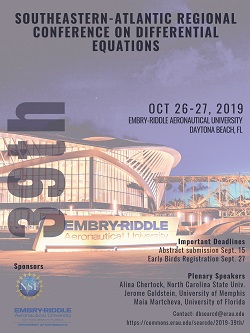Institution
University of Memphis
Abstract
We consider a fluid- structure interaction model consisting of the N-S equations coupled with a system of elastic equations. The interaction between fluid and structure is ubiquitous in nature, arising in several areas of biological, medical and engineering sciences. Consider a doughnut-like domain: a fluid occupies the exterior sub-domain, while an elastic structure occupies the interior sub-domain. They are described by the corresponding evolution equations which present strong coupling at the interface between two domains. A key factor - a novelty over past literature - is that the structure equation includes a term defining strong damping at the interior. This affects the boundary conditions on the interface which lead to a highly unbounded ``perturbation"- preventing standard methods developed for uncoupled structures to apply. Careful analysis of this effect along with the analysis of the pressure term contributed in N-S equations provides key technical - mathematical challenge. We establish several mathematical results describing the character of the overall evolution either free or else under the action of a control at the interface or at the exterior boundary.
Fluid-Viscoelastic Structure Interaction
We consider a fluid- structure interaction model consisting of the N-S equations coupled with a system of elastic equations. The interaction between fluid and structure is ubiquitous in nature, arising in several areas of biological, medical and engineering sciences. Consider a doughnut-like domain: a fluid occupies the exterior sub-domain, while an elastic structure occupies the interior sub-domain. They are described by the corresponding evolution equations which present strong coupling at the interface between two domains. A key factor - a novelty over past literature - is that the structure equation includes a term defining strong damping at the interior. This affects the boundary conditions on the interface which lead to a highly unbounded ``perturbation"- preventing standard methods developed for uncoupled structures to apply. Careful analysis of this effect along with the analysis of the pressure term contributed in N-S equations provides key technical - mathematical challenge. We establish several mathematical results describing the character of the overall evolution either free or else under the action of a control at the interface or at the exterior boundary.


Comments
View Parallel Session